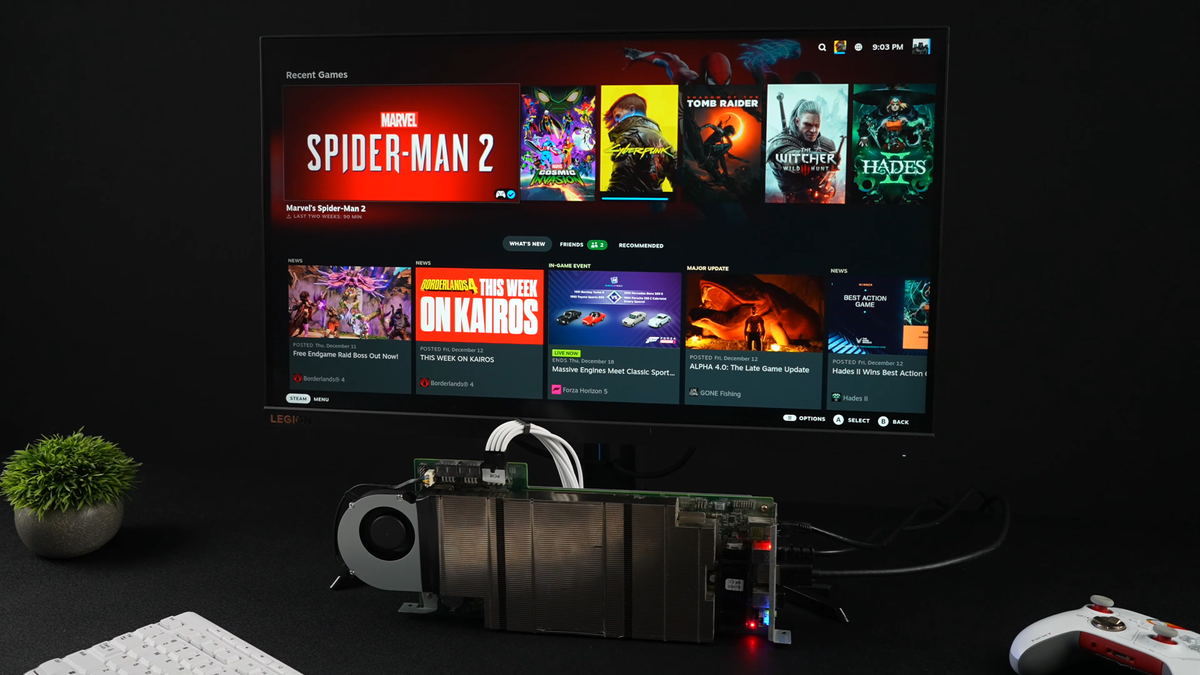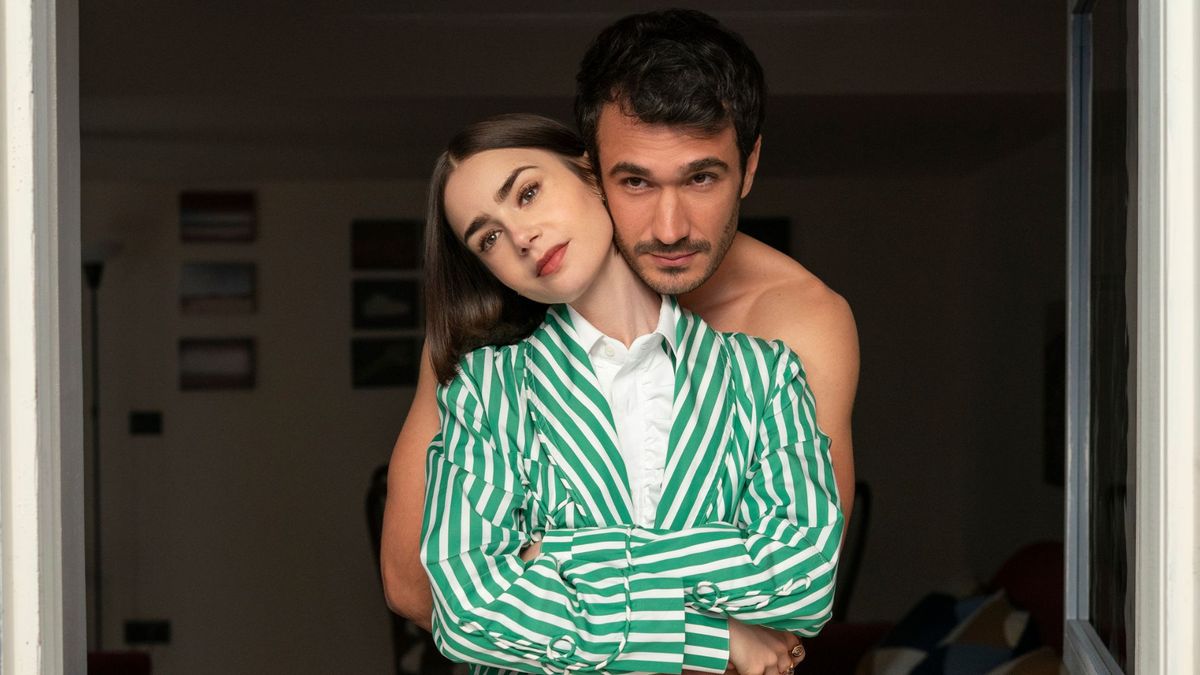Shudder‘s new thriller “The Dead Thing” (February 14) conveys a palpable love of movies and moviemaking right from its haunting opening montage: Single woman Alex (Blu Hunt) drifts in and out of one-night stands with men she meets on a dating app. Hypnotic, sensual, and immaculately framed and lit, the first scenes echo directors like Wong Kar Wai and Lynne Ramsey in their command of the frame and use of lighting and sound design to evoke psychological states.
Yet nothing in “The Dead Thing,” a genre-bending indie that first premiered at Fantasia last year, feels like mere imitation. Here is a movie by a director who has absorbed his influences into his DNA without being beholden to or limited by them. What follows plays “Looking for Mr. Goodbar” for the social media age, as Alex finds herself making what turns out to be a very poor choice when she swipes right on the wrong man, and “The Dead Thing” takes a turn into psychological and supernatural horror.
That the varied influences and tones are all held in perfect balance is impressive but perhaps not entirely surprising, given that director Elric Kane is a voracious movie fan well known in cinephile circles as the cohost of two popular podcasts, “Pure Cinema” (the official podcast of Quentin Tarantino’s New Beverly Cinema) and “Colors of the Dark” (the official podcast for Fangoria magazine). For Kane, the role of influence is a tricky issue, though one he addresses head-on in “The Dead Thing.”
“When you watch as many movies as we do, it’s impossible not to be under the influence, but I really focus on letting my taste guide the film I’m making,” Kane told IndieWire. “From the start, I was trying to make a film I wanted to see ,and one I didn’t feel was being made when I started production: an adult, emotion-driven, sexual horror film. There were a ton of movies in my mental movie stew in all stages of production, but I tried not to let any specific films dictate things. Ultimately it’s hard to know where the influences end and we begin, but I hope the film reflects the type of film I love and have championed all these years.”
Although Kane has co-directed a few no-budget features in the mumblecore vein, “The Dead Thing” represents a step up simply by having a budget and crew — though the director quickly points out that both were still extremely small. The film is ingeniously engineered to maximize its limited resources, which Kane was intent on starting with the screenplay.
“The idea was to write something at a scale we knew we could get made after previous false starts with bigger scripts,” Kane said. “So the office the character works in was the office I was working in. I knew the locations in that area like the back of my hand and had been filming them in my mind for years. I’ve always loved the way L.A. feels at night. It really empties out and feels eerie. Writing a story that takes place almost entirely in L.A. at night was definitely intentional to the aesthetic, but you also can get away with more away from the chaos of the day.”
 Elric Kane and Blu Hunt on set of ‘The Dead Thing’Shudder
Elric Kane and Blu Hunt on set of ‘The Dead Thing’ShudderKane also built his script around Alex knowing that, if he had a great actor, the movie would work. “The quote ‘the cheapest special effect is the human face’ has always stuck with me,” he said. “Casting is everything. If you cast well, you will direct less, and they will do the heavy lifting for the film. A miscast film is DOA.”
Kane felt that he got lucky with his cast — and indeed, one thing that places “The Dead Thing” well above many low-budget horror films is the excellence of its ensemble — but dealing with the realities of the business for the first time created some anxieties during pre-production. “It’s wild that when casting a film, you don’t get to actually chemistry-test actors with each other, which just seems crazy to me,” Kane said. “Agents and managers have offer-only type deals, so you are really taking a huge risk when casting and hoping for the best.”
Another curve ball for his first “real” movie was figuring out how to motivate people who were on the film just for the money — especially when there wasn’t much money to speak of. “I was definitely surprised at how much of a divide there can be between above-the-line and below-the-line crew on an indie,” Kane said. “On one side, you have friends and collaborators there out of passion for the idea, willing to really push themselves, and on the other side, you have folks working a minimum-wage-type gig, so it can feel at odds.”
The key was sharing his own enthusiasm with his collaborators. “My favorite moment was winning a disinterested crew member over with one of my more elaborate shots,” Kane said. “When they see that you know what you are doing, you see the effort increase for sure. But just trying to get all the disparate elements and cast and crew to gel in service of the idea itself created a lot of anxiety.”
 ‘The Dead Thing’Shudder
‘The Dead Thing’ShudderAnother anxiety factor no one had warned Kane about: deliverables, the dreaded multitude of elements that must be handed over to a distributor before they can or will release the film. “Just as you wash up to the shore of having finished and sold your film, you are made to deliver a massive list of technical and legal [items], and endless transcriptions of your film,” Kane said. “It can take months and cost a lot of money … Maybe no one talks about it because it would scare first-timers off, but it is definitely something to prepare for.”
The process was even more challenging because Kane used up his entire budget during filming and thus had to raise more money during post-production to finish. By the end, though, he felt he learned much that he could take forward to the next film. “Be open to compromise but be unrelenting with the stuff that truly matters,” he said. “No one can fight for your vision the way you can, so make sure you are fighting for the core of the film.”
For Kane, directing often became a matter of priorities and flexibility. “It’s easy to see everything as equally important when just shooting pages every day, but if you get the heart of the film onscreen, people will forgive some of the rougher edges,” he said. “Learning to creatively compromise on the fly was huge. We always hear about actors having to be ‘in the moment,’ but I think it’s equally important for directors to be open and ready to change and be reactive to the moment.”
In the end, Kane is both enthusiastic and pessimistic about the state of low-budget independent filmmaking. “On the plus side, we were shooting with affordable digital cameras at night with minimal lighting and creating beautiful images,” he said. “So you can create something truly cinematic on an indie budget — but even at the lowest budgets, the sales are lower than a few years ago, so it’s not a sustainable model. It works to make a ‘break-in’ movie, but the margins are so small that it would be hard to sustain a life as an indie filmmaker.”
That said, the ultimate satisfactions are undeniable. “The freedom of making a film with no one to answer to creatively except your team is a beautiful thing,” Kane said.
“The Dead Thing” begins streaming on Shudder on Friday, February 14.

 10 months ago
150
10 months ago
150










 English (US) ·
English (US) ·